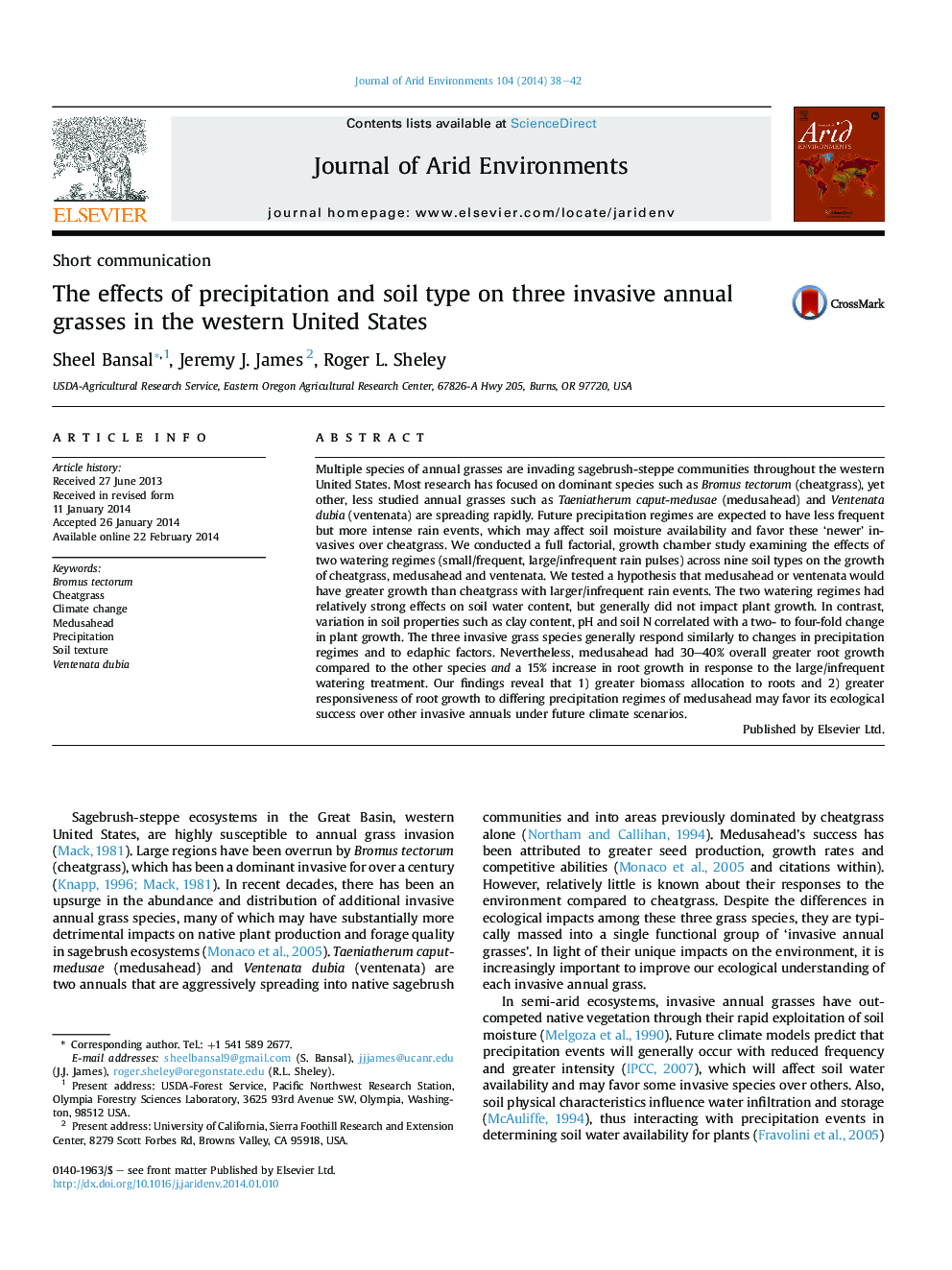| کد مقاله | کد نشریه | سال انتشار | مقاله انگلیسی | نسخه تمام متن |
|---|---|---|---|---|
| 4393020 | 1618254 | 2014 | 5 صفحه PDF | دانلود رایگان |
• We compared growth of 3 invasive grasses to precipitation and soil treatments.
• Precipitation pulses were either small/frequent or large/infrequent across 9 soils.
• Medusahead root growth had a positive response to large/infrequent precipitation.
• Soil type had relatively large effects on shoot growth for all species.
• Annual grasses generally respond similarly to precipitation and edaphic factors.
Multiple species of annual grasses are invading sagebrush-steppe communities throughout the western United States. Most research has focused on dominant species such as Bromus tectorum (cheatgrass), yet other, less studied annual grasses such as Taeniatherum caput-medusae (medusahead) and Ventenata dubia (ventenata) are spreading rapidly. Future precipitation regimes are expected to have less frequent but more intense rain events, which may affect soil moisture availability and favor these ‘newer’ invasives over cheatgrass. We conducted a full factorial, growth chamber study examining the effects of two watering regimes (small/frequent, large/infrequent rain pulses) across nine soil types on the growth of cheatgrass, medusahead and ventenata. We tested a hypothesis that medusahead or ventenata would have greater growth than cheatgrass with larger/infrequent rain events. The two watering regimes had relatively strong effects on soil water content, but generally did not impact plant growth. In contrast, variation in soil properties such as clay content, pH and soil N correlated with a two- to four-fold change in plant growth. The three invasive grass species generally respond similarly to changes in precipitation regimes and to edaphic factors. Nevertheless, medusahead had 30–40% overall greater root growth compared to the other species and a 15% increase in root growth in response to the large/infrequent watering treatment. Our findings reveal that 1) greater biomass allocation to roots and 2) greater responsiveness of root growth to differing precipitation regimes of medusahead may favor its ecological success over other invasive annuals under future climate scenarios.
Journal: Journal of Arid Environments - Volume 104, May 2014, Pages 38–42
